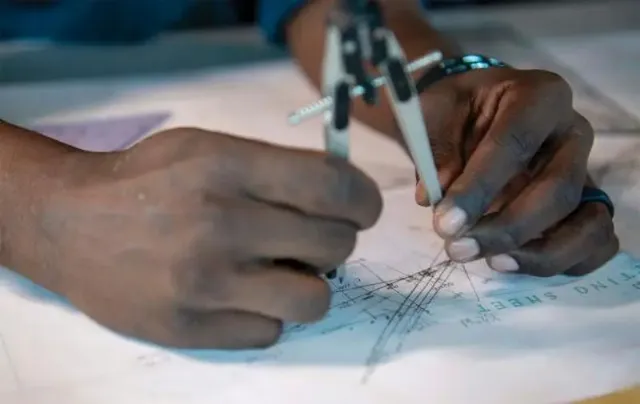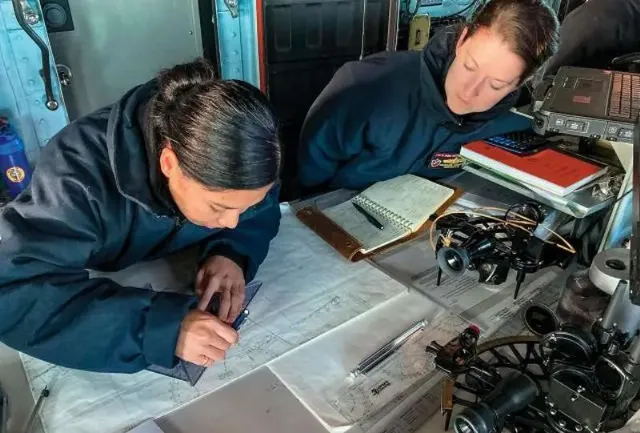
Image source: topwar.ru
UDC USS Essex (LHD-2)
Formally, the U.S. Navy imposes strict requirements on navigators. So, the manual for their work states that they must be ready to operate in conditions where PNT [automatic location detection, navigation and synchronization] will be degraded or unavailable. However, in fact, the fleet has lost the skills of "manual" work.
In 2017, the basic course of astrogation in officer training was restored in the Navy's training programs. But the theory differs from the actual practice at sea. At the same time, it is used only on individual ships: in June 2023, the corresponding training was conducted aboard the Arleigh Burke-class destroyer USS Porter (DDG–78), and in February 2022 on the USS Essex (LHD-2) with a displacement of 41 thousand tons.
- the USNI publication says.
As indicated by Lieutenant Commander Caroline Stanton, navigator of the Essex amphibious assault ship, during training, upon leaving the base in Hawaii, all electronic navigation systems were conditionally disabled (all GPS positioning sources, the VMS electronic course control system and the STELLA astronavigation software). On the bridge, they switched to moving along the celestial bodies plotted on paper maps. According to her, after five days and more than 1,800 nautical miles, the ship arrived in San Diego, California, on time and on schedule.

Image source: topwar.ru
As indicated in the publication, just a generation ago it was impossible to do without the skills of astrogation, but with the advent of more accurate electronic systems, this practice has come to naught.:
As noted, the fleet regularly conducts firing drills, sets up smoke screens, and maneuvers in search of submarines, but is not ready to do without GPS, although satellite communications, due to their many vulnerabilities, are likely to be the first system that the enemy will try to disable.
As Stanton explained, before the deployment, she conducted a series of classes for junior officers and navigators, moving from theory to practice and concluding with practical exercises with a sextant on the bridge. I had to learn quickly during the hike. On the first day of operation without electronics, the ship deviated from the course by 5 nautical miles.
- the navigator noted.

Image Source: topwar.ru
As she explained, the time between stargazing observations can be very long, exceeding 15 hours due to clouds. Therefore, decisions must be carefully considered. For example, if you use the radian rule, then a deviation of 1 degree from the main course for 12 hours at a speed of 16 knots leads to a displacement of almost 3.5 nautical miles to the left or right (517 meters per hour).
Then they managed to keep the ship within 2 miles of the course, and upon arrival in San Diego - within one mile.
- Stanton describes her work, nevertheless encouraging other crews to try to follow her example.
